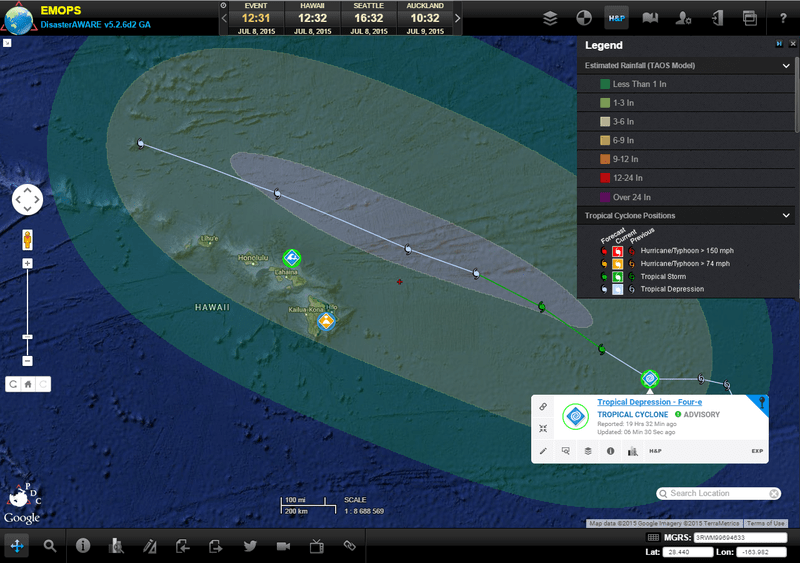Tropical Depression Four-E formed in the central Pacific on July 7, local time, and is expected to gradually strengthen and reach tropical storm strength later today (July 8). As of the most recent warning from the Joint Typhoon Warning Center (JTWC), Tropical Depression Four-E is located east of Hilo, Hawaii, and tracking northwestward with maximum sustained winds near 35 miles per hour.
According to the Central Pacific Hurricane Center (CPHC), there are no coastal watches or warnings in effect, and no current hazards affecting land. Nonetheless, high surf and small craft advisories are in place for south-facing shores until 6 pm Hawaii Standard Time. Increased rainfall is expected over the weekend, as well as the threat of localized heavy rainfall and thunderstorms. Muggy weather conditions are also expected as Tropical Depression Four-E tracks north of island chain, temporarily disrupting trade winds.
The JTWC has also issued a Tropical Cyclone Formation Alert for another disturbance in the central Pacific (located south-southeast of Johnson Atoll) that has the high potential for development into a significant tropical cyclone within the next 24 hours.
While this tropical cyclone is not expected to make landfall in the Hawaiian Islands, it is a good reminder for communities, families, and individuals to take the necessary steps to prepare for hazard events. This year the CPHC Outlook predicted an above normal hurricane season, with five to eight tropical cyclones expected.
Pacific Disaster Center continues to closely monitor Tropical Depression Four-E as it approaches the Hawaiian Islands, and will provide decision support and situational awareness products for the duration of the event. Keep up with the latest information via PDC’s Global Hazards Atlas, or with the Disaster Alert mobile application. If you are an emergency manager or humanitarian assistance practitioner and would like access to PDC’s DisasterAWARE platform, click here for more information.
• Learn more about the 2015 Central Pacific Hurricane Outlook
• Visit the PDCWeather Wall
• See information from JTWC or the NWS CPHC
• Visit the NWS Climate Prediction Center
• Visit NOAA’s National Hurricane Center
• Refer to NOAA’s explanation of the Saffir-Simpson Hurricane Wind Scale.
More resources for hurricane safety and preparedness:
• Hawaii Hazards Awareness & Resilience Program (HHARP) to enhance community resilience, or
• Read about how parents can help kids learn about disaster preparedness.

